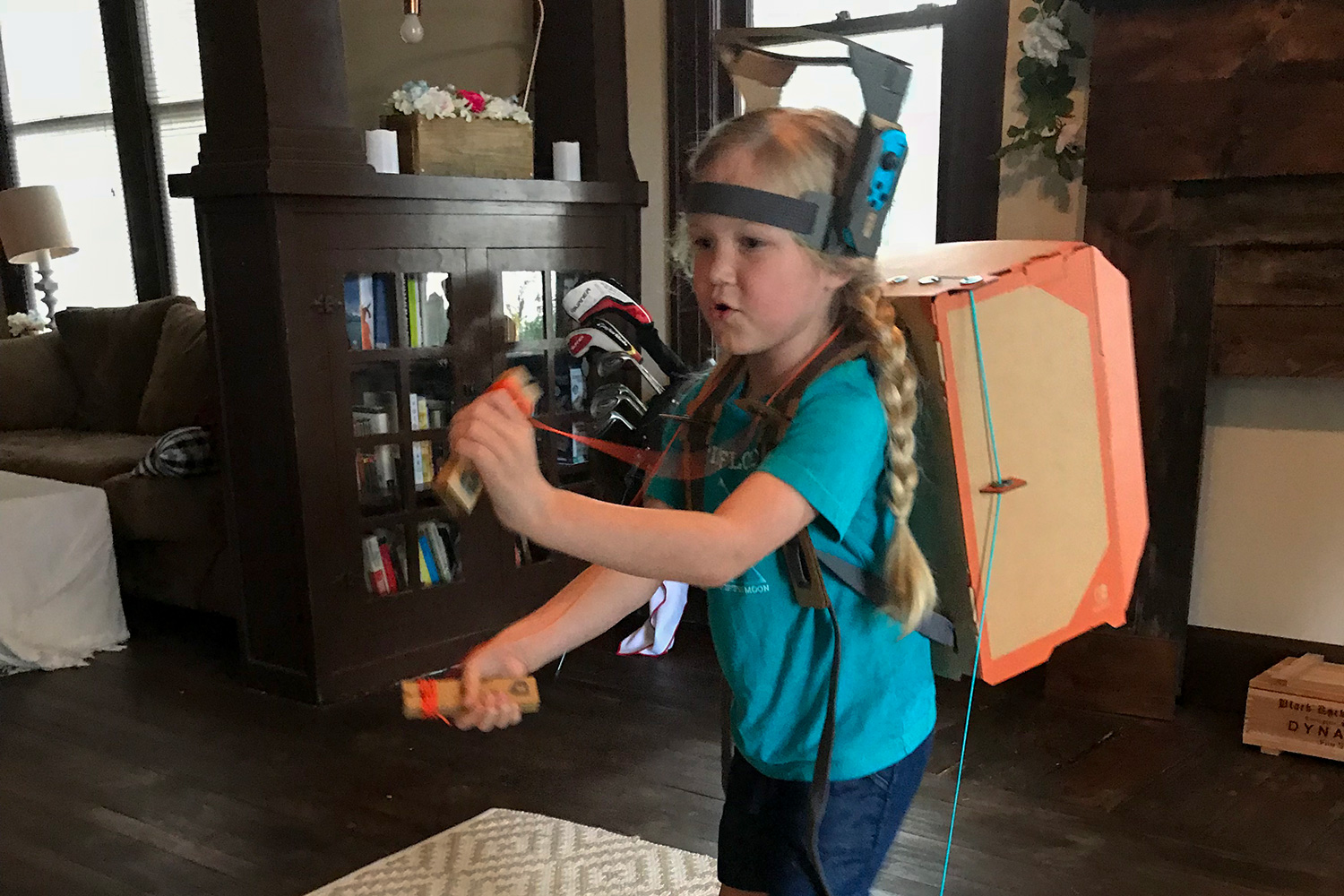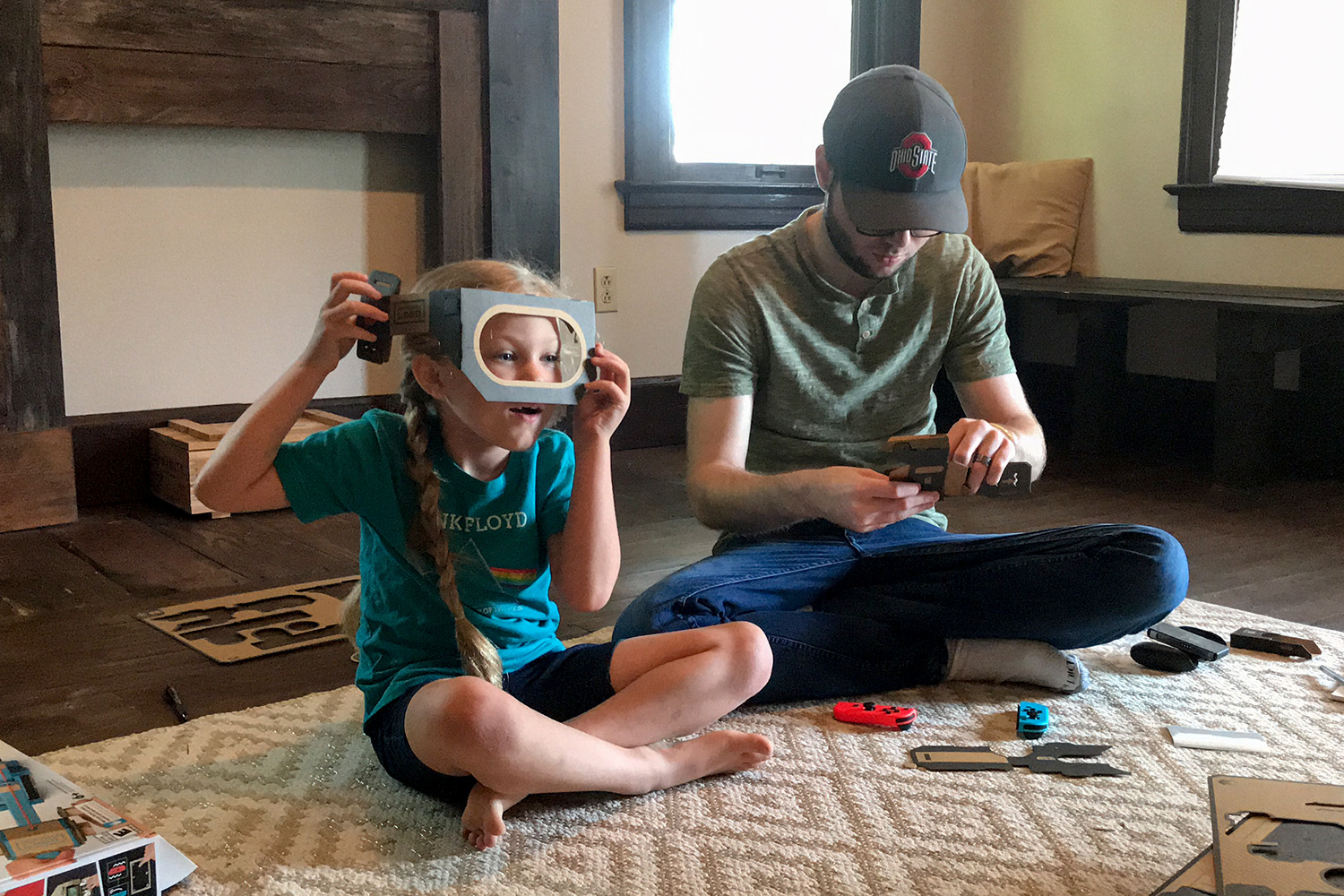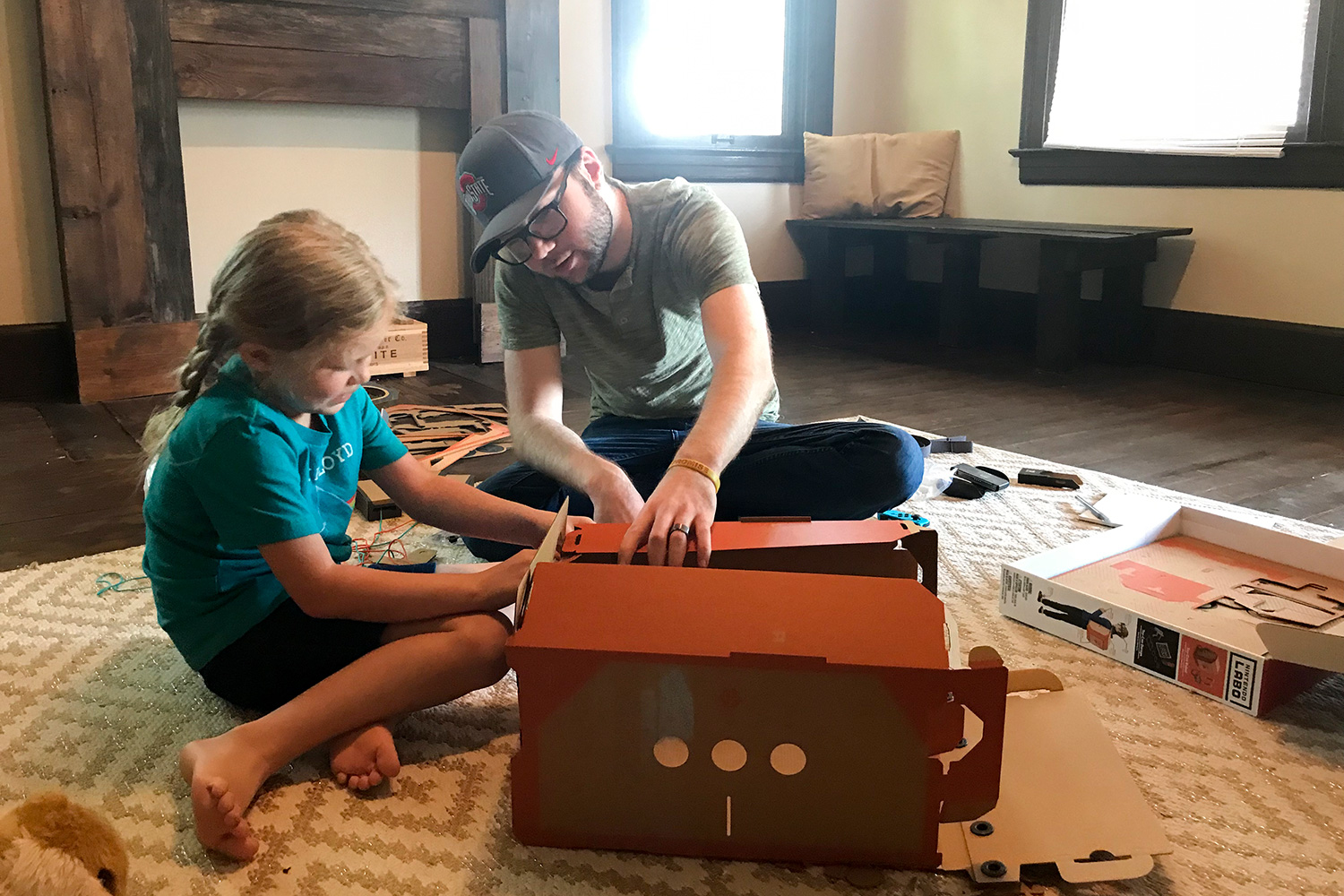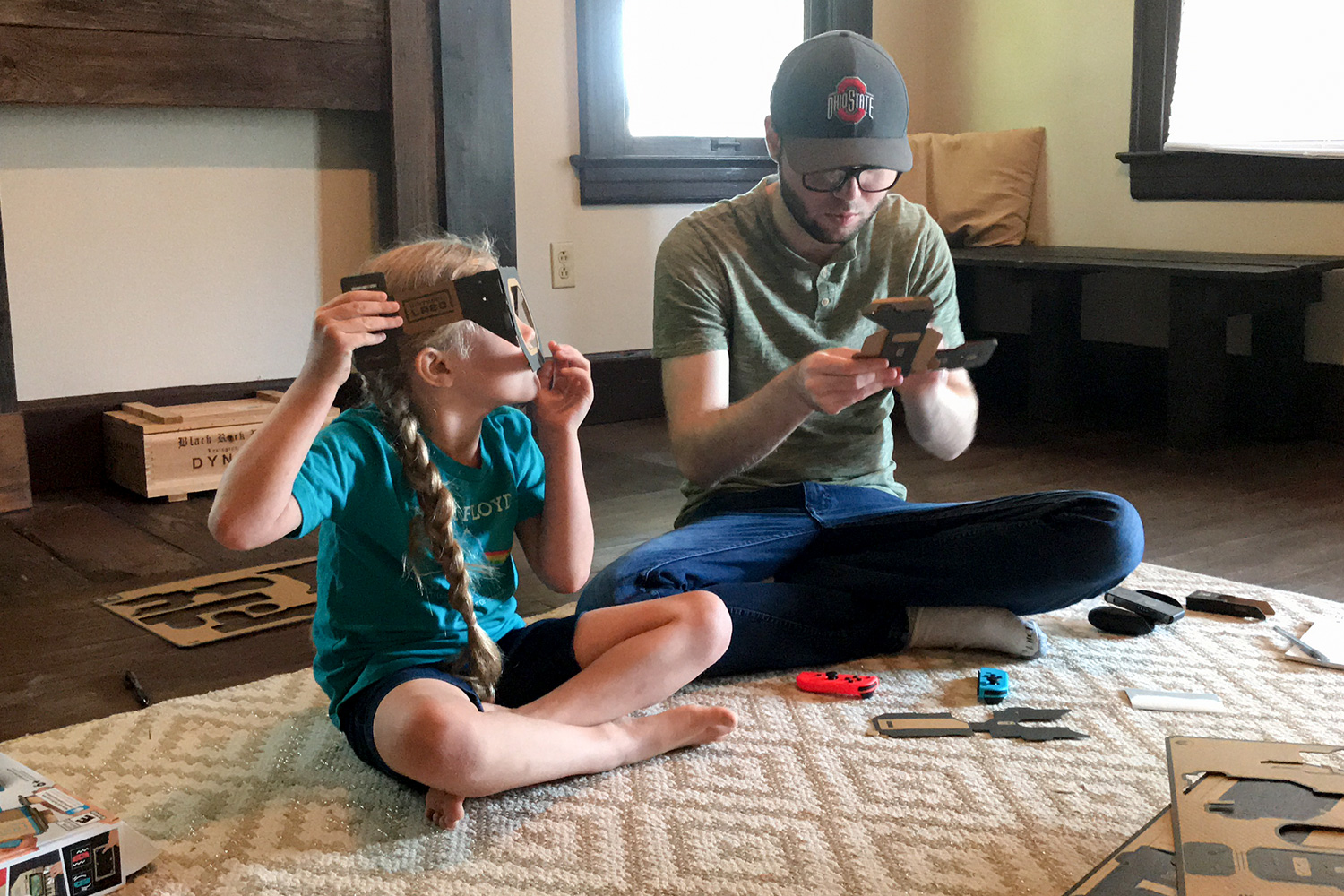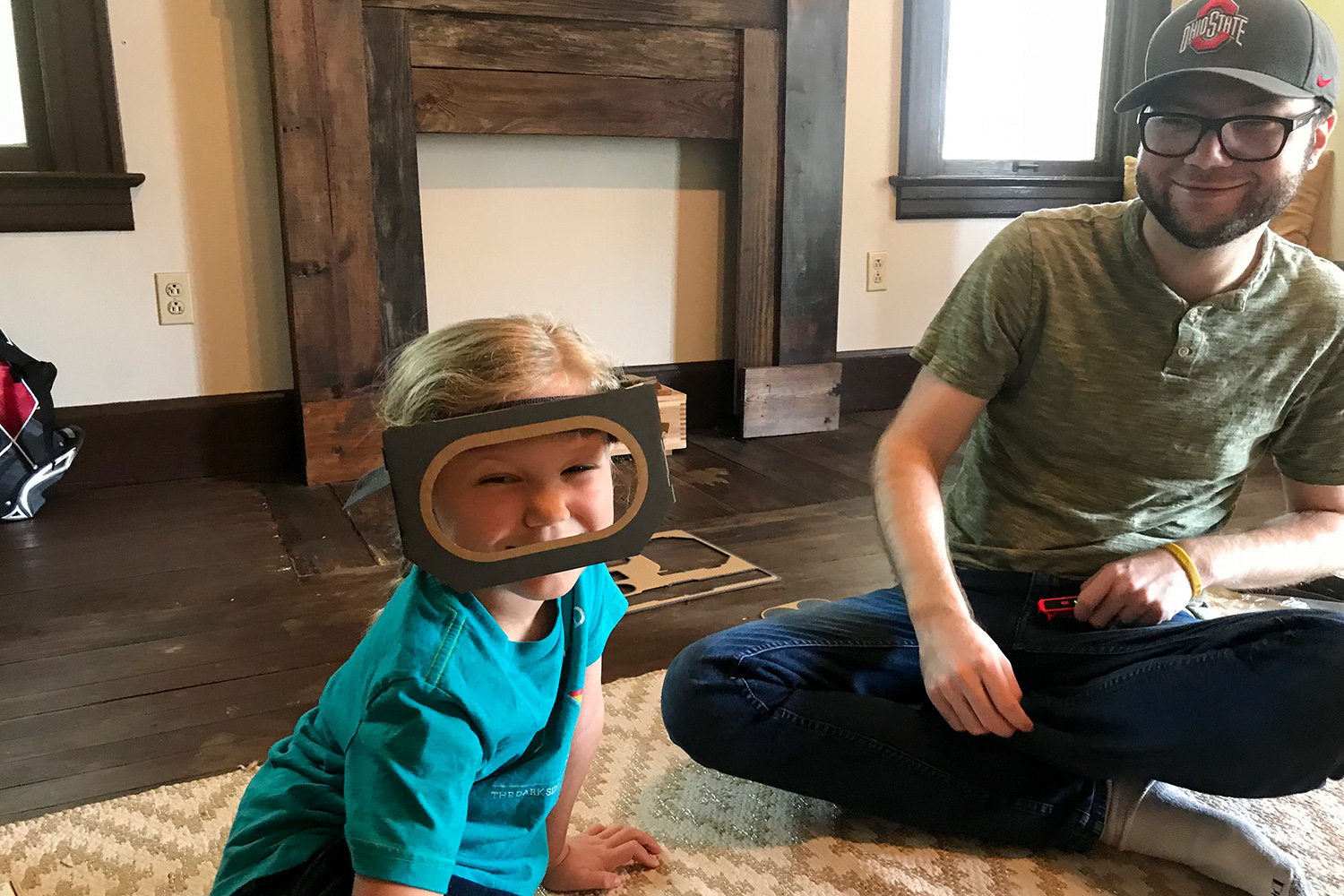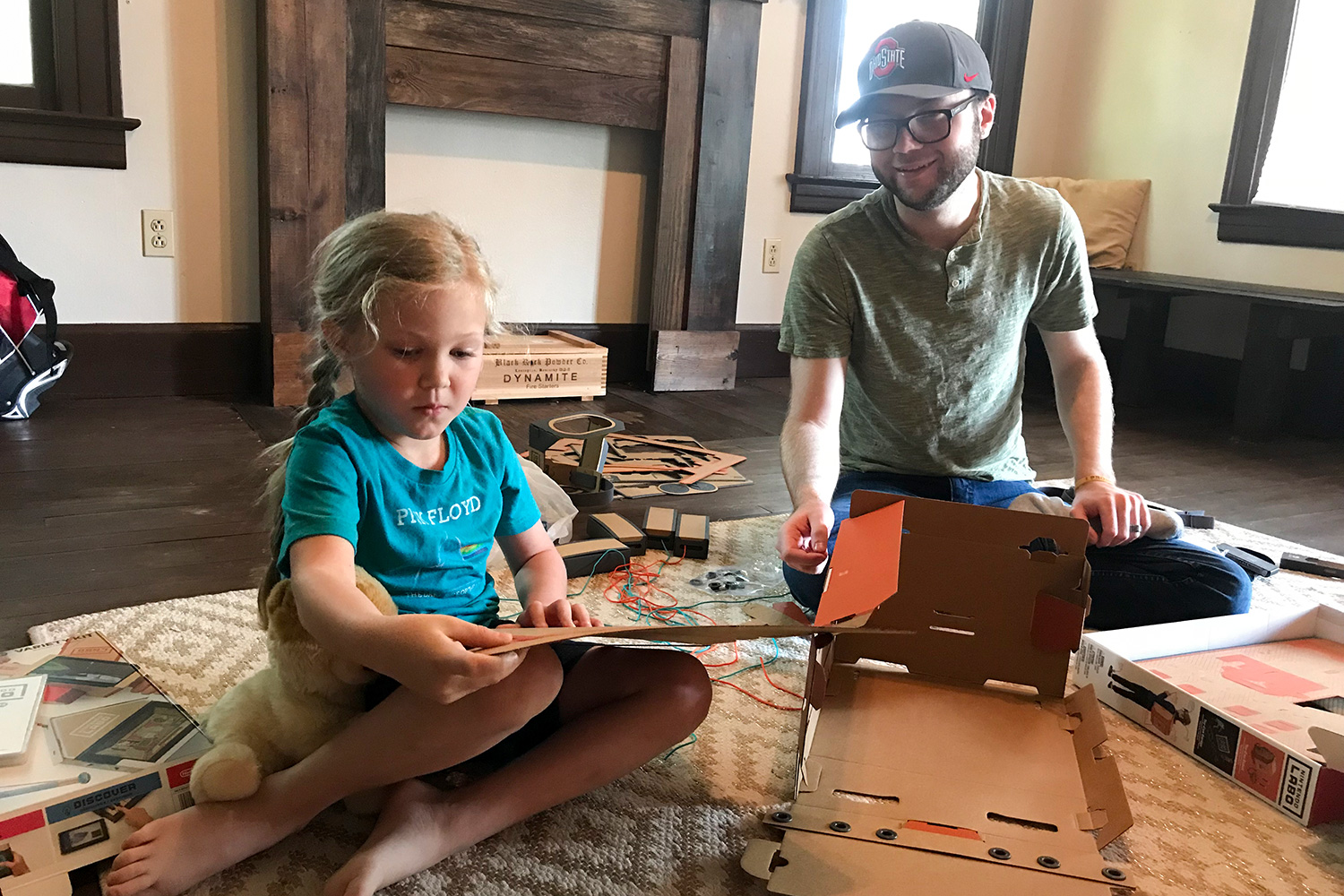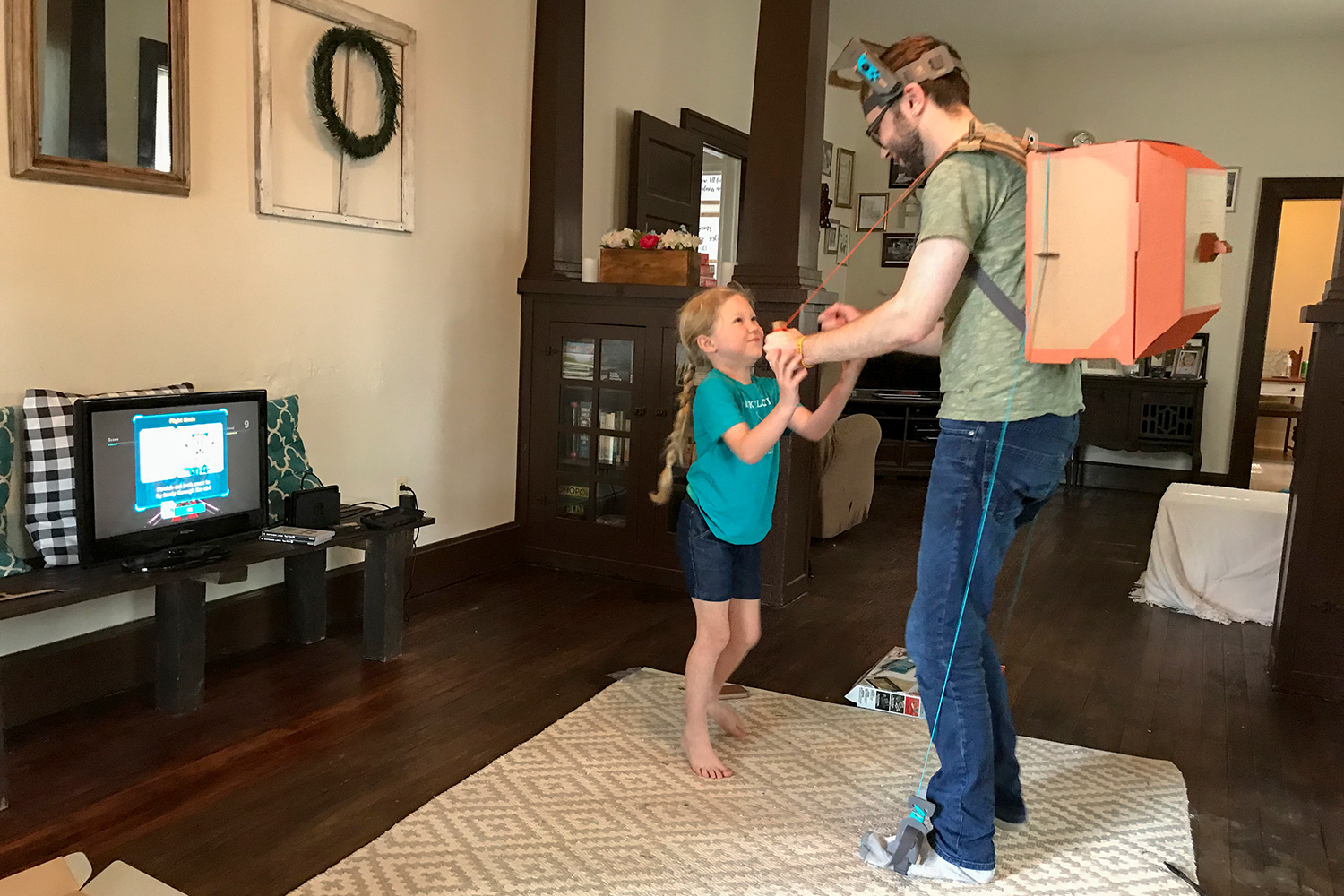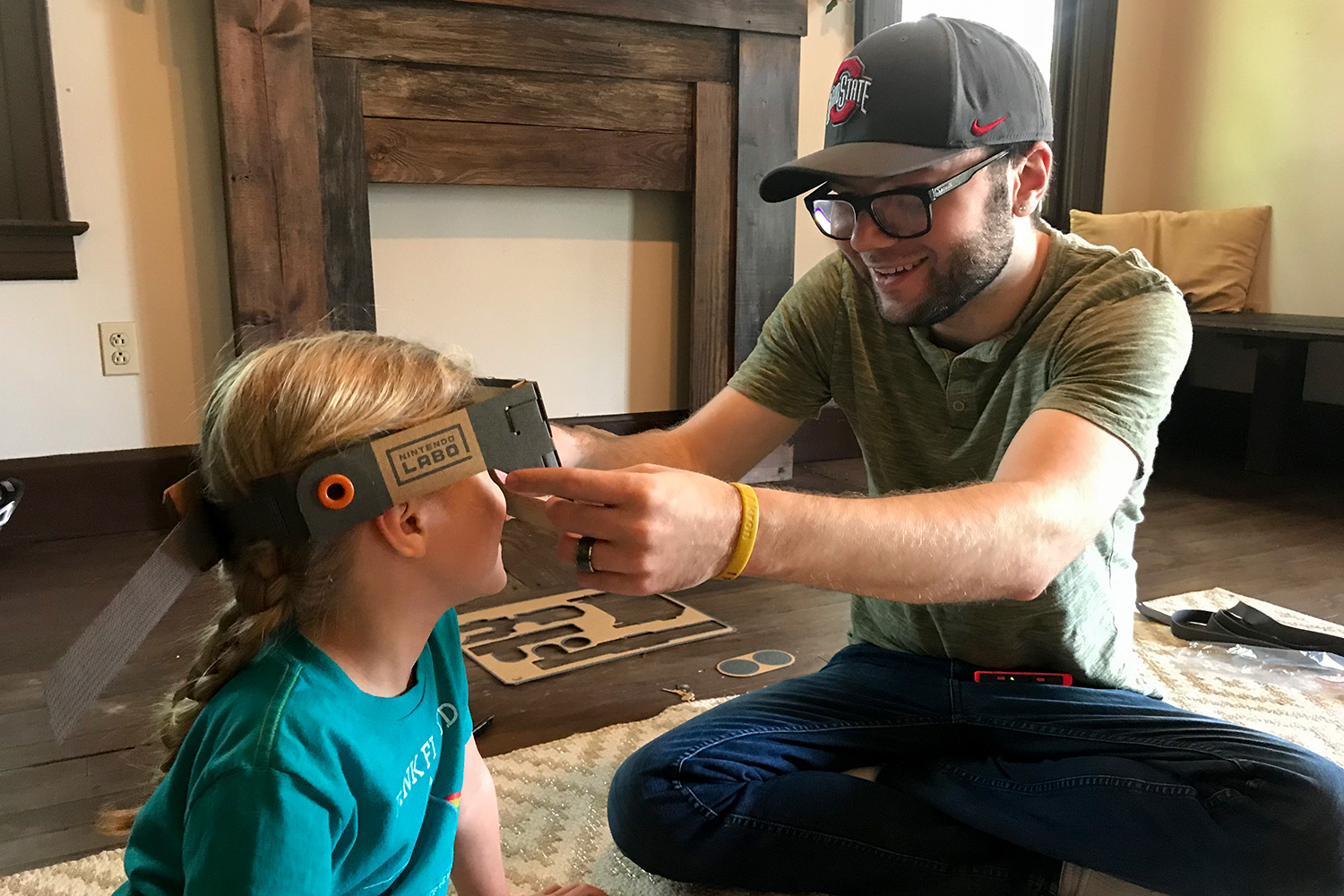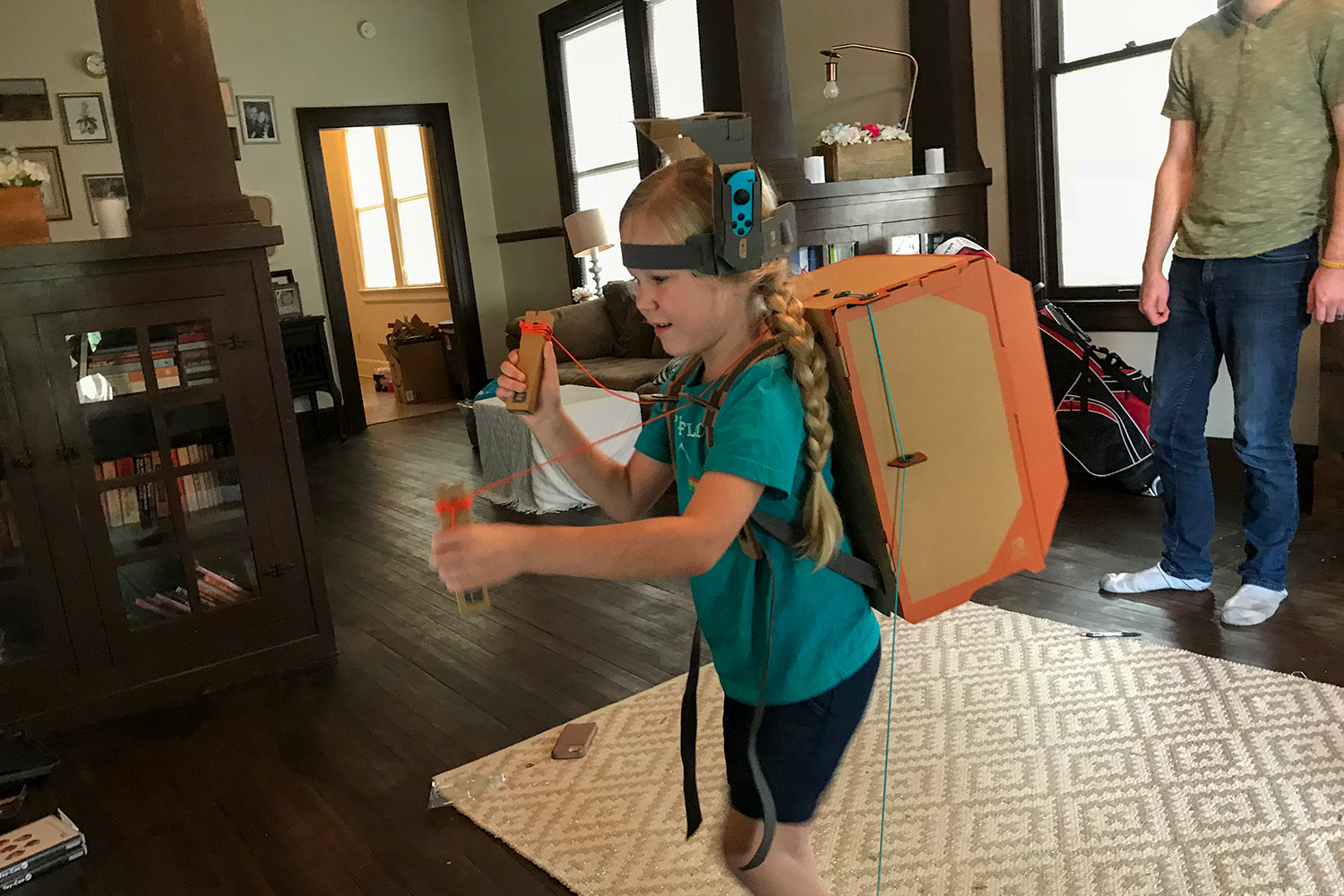When my daughter first glanced at the Nintendo Labo Robot Kit, she thought we were building a Transformer. I explained that it wasn’t exactly a Transformer. Roughly four hours later, I helped her put the cardboard backpack straps over her shoulders, slid her feet into the straps, adjusted the yarn length of the arms for optimal punching motion, and attached her robot visor. Then she began to joyfully stomp and punch through buildings and flying saucers. It didn’t take long for her to figure out that if she bent her knees, the robot transforms into a car.
In my daughter’s mind, putting on the cardboard turns her into a Transformer.
“I told you it was a Transformer,” she said.
You don’t literally play as Optimus Prime, but that’s not the point. The Labo robot does what it sets out to do, at least for young, imaginative minds with restless bodies. In my daughter’s mind, putting on the cardboard turns her into a Transformer. Isn’t that what matters?
Building a transform…er, robot suit
Before you or your kids can don the suit and get to smashing, the Toy-Con robot must be built. Construction is integral to the Labo experience. As the most elaborate of the current Labo Toy-Cons, the robot takes a solid afternoon of work to build. Nintendo estimates between three and four hours. Working alongside my wife and daughter, we found that spot on. It took us about three and a half hours from opening the box to completing the final step.
Though it takes a while to finish, Nintendo did an excellent job making the instructions intuitive and easy to follow. The manual is an interactive on-screen guide that provides an exhaustive, but incredibly useful, perspective. Every required fold is dutifully demonstrated on screen. The Joy-Con acts as the remote, which you can use to fast forward and rewind, zoom in and out, and pan around the screen to see different angles of each step. The thoroughness of the guide makes it hard for something to go awry throughout the eight multi-part steps.
Spending a Saturday sprawled across the living room floor with my wife and daughter was a joy.
Still, it’d be a taxing process to build the robot solo. You’ll want someone holding the controller while another person (or two) works on the task at hand. At one point, my daughter and wife took a break while I worked on the backpack straps. Once solo, I found scrolling back and forth between the myriad of folds, and fast forwarding to see what comes next, to be cumbersome.
There’s also the question of whether the robot can be built without the help of an adult. Obviously, that depends on the age, aptitude, and demeanor of your kid, but the clear answer for me was a no. My seven-year-old daughter is a big fan of Lego, but the length of the build and the complexity of its steps made it an arduous task.
She had no problem folding along the creases, but turning the flat pieces into refined structures took some guidance, trial and error, and often an extra pair of hands.
Four instructions proved particularly tough: fastening the grommets, placing reflective stickers, tying the string, and threading the leg and backpack straps. Each of these steps required a combination of finesse, patience, and persistence that small children rarely possess.
That’s not necessarily a problem. Spending a Saturday sprawled across the living room floor with my wife and daughter was a joy. Despite my wife and I completing the brunt of the build, my daughter contributed each step of the way. And when we had the robot fully assembled, she was proud of the work we did together.
Putting our build to the test
Though the robot Toy-Con felt surprisingly sturdy for a hunk of cardboard, I was worried it would fall apart when put to the “child-flailing-her-arms-and-legs-as-fast-as-humanly-possible” test.

I’ve been surprised. Despite the consistent thud of the power pistons hitting the top of the backpack each time she stomped and punched, there are no signs of structural weakening. It’s cardboard, so we imagine that it’ll give out eventually, but there’s no sign of problems so far.
Sure, [the game’s] visuals are underwhelming, to put it kindly. She didn’t seem to notice or care.
While I grew tired of the kit’s bundled game after a couple rounds, I feel bad even saying that — because it wasn’t made for me. It didn’t matter to my daughter that the game is nothing more than a “destroy everything in sight” simulator. She didn’t care that the visuals are underwhelming, or the objectives simple. I imagine other kids will feel similarly.
There’s also a versus mode where the second player can fight with a pair of Joy-Cons, and a training mode that teaches you new moves through a series of challenges. She tried them out, but my daughter quickly gravitated back to the main game mode, where she could topple skylines and chase down bizarre flying saucers.
As a parent, I initially saw the Robot Kit as an opportunity for some fun bonding time with my daughter. It has proven to be that and more. When my daughter arrives home from school today, I fully expect her to ask if she can be a Transformer again. So, is $80 a fair price for some cardboard and a simple smash-em-up game?
Absolutely.
